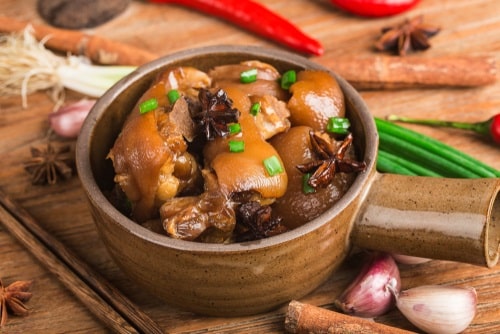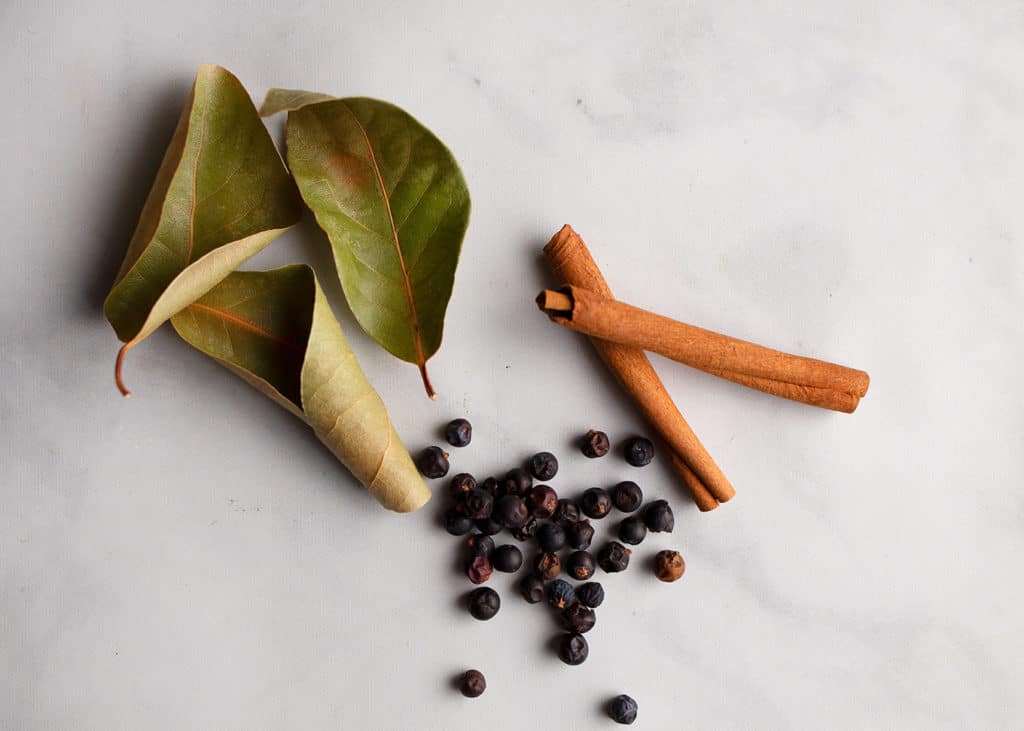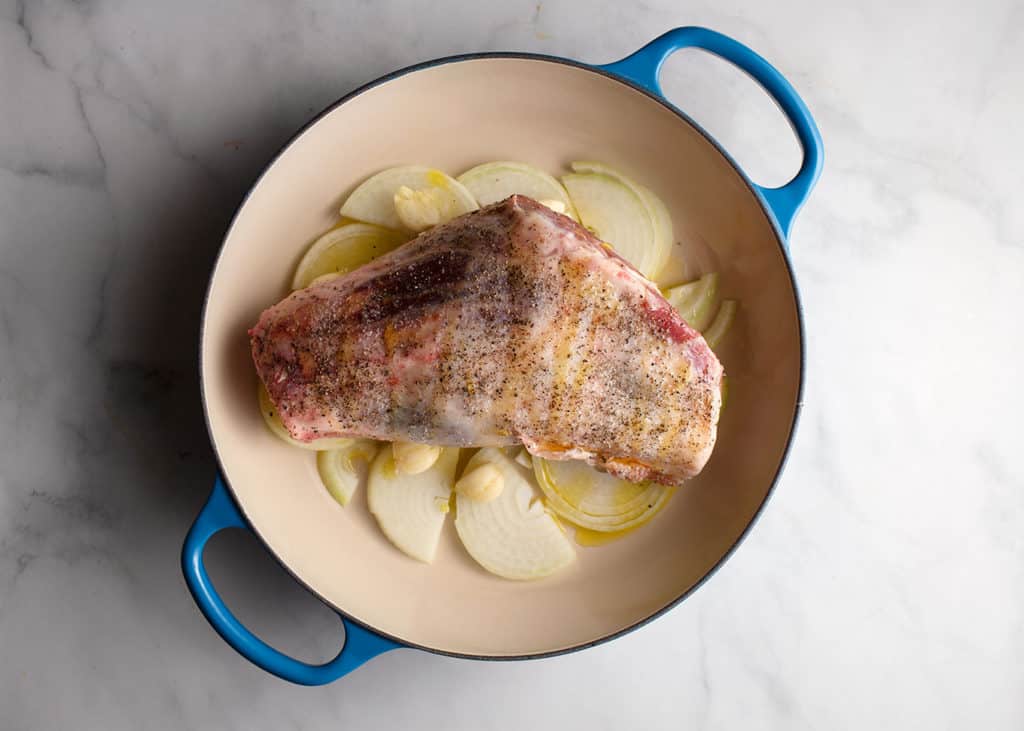As my son used to say when he was little, ham hocks are thought to be a more “peasant” type of meat. But when I bought a half hog from a local farmer and got two of them, I knew I had to find a way to make them taste better than I had in the past. I read a lot of cookbooks and searched the internet before deciding that an oven-braised ham hock might be the answer.
Growing up having Southern parents, I heard about ham hocks a bit. In the South, ham hocks are used to flavor soups, greens, and beans among other things. My mom didnt cook with them because she didnt like them. I think her mom seriously scared her by cooking green beans with ham for hours on end. But ham hocks taste great and are very tender when cooked right.
A tasty pork cut that doesn’t get enough attention is the ham hock. It can add a lot of flavor to soups, beans, greens, and other dishes. As for how to cook them, there’s an old question: should the skin be taken off before cooking or left on?
In this complete guide, we’ll explore the pros and cons of removing ham hock skin, proper techniques for skinning and cooking ham hocks with and without the skin, and delicious recipe ideas to take advantage of this versatile ingredient After reading, you’ll have the knowledge to decide whether to skin your ham hocks and make the most of them in your kitchen
The Case for Leaving the Skin On
There are a few compelling reasons why you may want to cook your ham hocks with the skin left intact
-
Flavor. The skin adds a porky flavor, and the fat under the skin keeps the meat moist and tender. Many aficionados argue the skin is the tastiest part!.
-
Collagen. The skin is loaded with collagen which breaks down into gelatin when cooked slowly over low heat. This gives body, texture and mouthfeel to dishes like soups and beans.
-
Crunch. When cooked low and slow, the skin becomes melt-in-your mouth tender. You can also bake, broil, or fry the skin of a ham hock to get a crunchy, crackly outside that adds texture.
-
Nutrition. Pork skin is a good source of protein. And despite its fat content, it has a better ratio of unsaturated to saturated fat compared to the meat.
Reasons for Removing Ham Hock Skin
However, there are also good reasons why you may want to remove the skin before cooking your ham hocks:
-
Lower fat and calories. The skin is high in fat and therefore calories. Removing it reduces the total fat and calorie content.
-
Easier to eat. Depending on the cooking method, the skin can be rubbery and tough. Removing it makes the hock easier to eat.
-
Avoid chewing difficulties. For people with dental issues, the skin can be difficult to chew. Skinning the hock provides tender meat without this challenge.
-
Personal preference. Some people simply don’t enjoy the skin’s texture, finding it unappealing. Cooking and serving the meat only suits their tastes.
-
Dietary restrictions. Certain diets like keto and paleo emphasize higher protein over fat. Skinning the hock helps align with macro ratio goals.
So if your priorities are reducing fat/calories, accommodating textures preferences or dietary needs, or avoiding chewing difficulties, removing the skin may be preferable.
Proper Technique for Skinning Ham Hocks
If you opt to remove the skin from your ham hocks, use the following techniques for best results:
-
Skin the raw hock after cooking. Skinning before cooking leads to moisture loss.
-
Allow the cooked hock to cool until safe to handle. Then, holding the skin taught with one hand, use a sharp boning knife to cut between skin and meat.
-
Start at the knuckle end and work down towards the butt. Make short slicing motions to avoid gouging the meat.
-
Once separated, grab the skin with a paper towel and peel it off in one piece. Use the knife to detach any stubborn bits.
-
Inspect the skinned hock and remove any remaining fat or tissue with a paring knife.
-
Chop the removed skin and add it back to dishes if desired. Or discard if not using.
Skinning after cooking maximizes moisture retention and flavor. Be sure your knife skills are up to the task, as the skin can be slippery.
Cooking Ham Hocks with the Skin On
To cook ham hocks while keeping the skin on, follow these tips:
-
Scrub the skin under cool running water to remove any debris. Pat dry.
-
Simmer, braise or roast the hock low and slow at 300°F or below. This melts connective tissue and fat.
-
Cook in liquid like broth, wine, or water. The skin releases collagen to thicken the cooking liquid.
-
Turn occasionally for even cooking. Use tongs to avoid piercing the skin.
-
Cook times will range from 1-3 hours. The meat should shred easily when fully cooked.
-
Add aromatics like onions, carrots, celery, garlic, and herbs to boost flavor.
-
Finish by browning under the broiler or in a hot skillet to crisp the skin.
The low and slow cooking followed by high heat crisping gives tender meat and crackly skin. Be sure to budget the extra time compared to skinless hocks.
Cooking Ham Hocks Without the Skin
Here are some tips for cooking skinned ham hocks:
-
Sear the hock in a hot skillet before simmering or braising. This browns the meat and enhances flavor.
-
Add a touch of fat like oil or butter to the cooking liquid. The skin’s fat needs replacing to keep the meat moist.
-
Wrap in foil or parchment if roasting. This protects from drying out without the skin’s fat buffer.
-
Cook in flavorful liquids to impart moisture and taste to the meat. Try wine, broth, tomatoes, beer, etc.
-
Check doneness early and add liquid if drying out. Skinned hocks become tender before those with skin.
-
Shred meat once cooked and use in your dish as desired. The bones can be discarded.
Without the skin, moisture control and flavor enhancement are key. But the cook time is reduced, yielding tender meat faster.
Delicious Ham Hock Recipes
Now that you know the ins and outs of preparing ham hocks, here are some incredible recipes that let you enjoy them at their very best:
Split Pea Soup with Ham Hocks
Simmer smoked ham hocks with split peas, vegetables, and seasonings for a hearty, comforting soup. The skin adds body, while the meat shreds into the broth.
Red Beans and Rice with Ham Hocks
Slow cooked kidney beans soften and meld with the ham hock’s meat and smoky skin. The beans thicken the cooking liquid into a luscious sauce for rice.
Collard Greens with Ham Hocks
Braise ham hocks low and slow with chopped collards, chicken broth, onions, and spices. The creamy greens pair perfectly with the tender pork flavor.
Ham Hock and Potato Hash
Chop cooked ham hock meat and crispy skin and fold into a skillet hash with potatoes, peppers, and onions. Top with a fried egg for an easy, satisfying meal.
Ham Hock Broth
Simmer ham hocks in water with vegetables, herbs, and spices to extract rich, meaty flavor. Strain and use as the base for soups, stews, risotto, and more.
With the right preparation method, ham hocks can be adapted to countless dishes. Choose whether to skin or not skin based on the recipe and your preferences. Then celebrate the underrated ham hock in all its glory!

The method to make Oven Braised Ham Hock
Start the ham hock in a hot oven so you can get the fat nice and crispy. After about 30 minutes, add some bay leaves, a couple of cinnamon sticks, and some juniper berries. Cover your baking dish and let it cook for 2-3 hours.

You want it to be so tender and succulent! It will just come right off the bone. And the flavor? Amazing! The onions and garlic mixed with the cinnamon and juniper berries is SO good!.
How to buy ham hocks …
Unless you buy a half hog from a farmer! If your store doesn’t have ham hocks, ask the butcher if they can get them for you. They are in the freezer at my grocery store and are usually cut into smaller pieces. If thats how you find them, youll need to buy four.
As you can see, mine is all one piece and weighs about three pounds.

Salt and pepper the ham hock a lot, then put it on a bed of sliced onions and garlic. Depending on the onion size, youll need one or two. You want enough onions slices to cover the bottom of the braising dish.
A butcher taught me! Discover how to cook the ham hock correctly
FAQ
Do you cook a ham hock with the skin on?
Do you take skin off ham hock before making soup?
Is it okay to eat ham skin?
Should you remove ham hock skin after cooking?
In addition to its anti-aging benefits, the ham hock’s skin will add flavor and richness to the dishes made with it. The bottom line is that removing the ham hock’s skin is a personal choice that depends on the dish and a person’s taste. If you choose to remove it, it’s best to do so after cooking to preserve flavor and moisture.
How long can ham be without refrigeration and still be safe?
Most food experts recommend that ham, should not be left out at room temperature for more than 2 hours. After that time, you should discard it.
How to cook ham hock with skin on?
To prepare ham hock with the skin on, start by rinsing it with water to remove any foam on the surface. Then, cook the ham hock for 20-30 minutes before rinsing it again. After that, cook it for an additional hour to ensure that it’s fully cooked through.
Should ham hocks be soaked before cooking?
It is not necessary to soak ham hocks before cooking. However, in some instances, it may be beneficial. For example, if you want to remove the excess salt from the ham hock, soaking in warm water for about 2 hours will be helpful. Most people cook ham hocks by boiling them in water or adding them to soups and stews.
